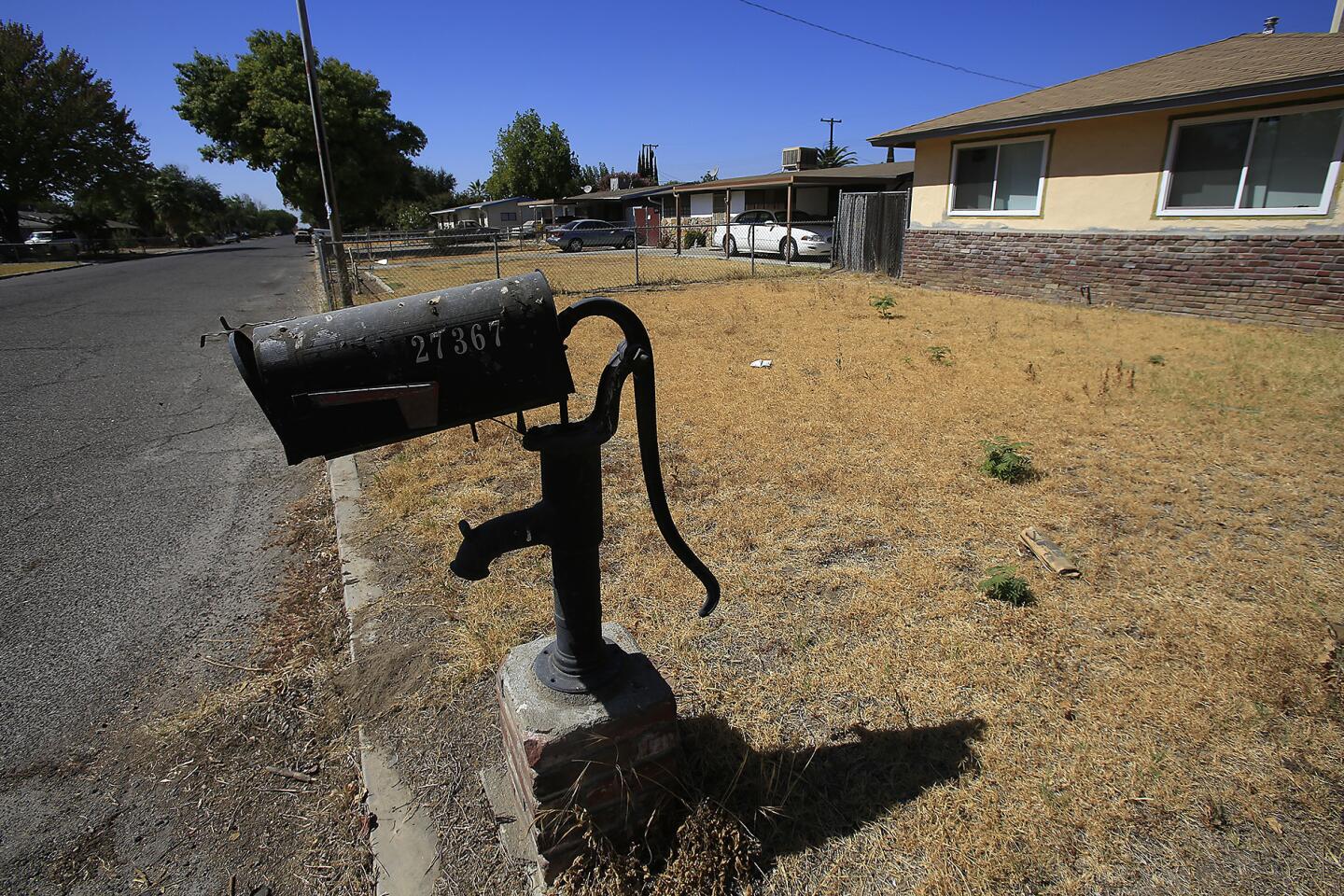$10,000 fines a potent PR tool against water waste
- Share via
Nobody knows how many water wasters there are in California. And it’s far from clear that converting them to zealous conservationists would make a major dent in the drought.
But the threat of fining wasters $10,000 a day —- as Gov. Jerry Brown proposed this week — could be a potent political and psychological weapon.
As the governor pushes to cut urban water use across California by 25% over the next year, experts say he must create a sense of urgency about the drought and the need to save water. And headline-making fines would underscore how seriously officials are taking the problem, even if relatively few $10,000 citations are handed out.
“A smart PR campaign is the carrot and the fines are the stick,” said Jonathan Parfrey, a former DWP commissioner and executive director of Climate Resolve. “$10,000 gets your attention … but encouraging people is always far, far better than pestering.”
Up to now, local water agencies across the state have leaned on public relations campaigns, rebate programs and educational outreach to drive down water consumption.
For example, the Los Angeles Department of Water and Power has issued only 10 financial penalties for repeated water waste since January 2014, despite handing out thousands of letters and citations, officials said Wednesday.
“Folks are listening,” spokeswoman Michelle Figueroa said. “There are hardly any repeat offenders that are assessed fines.”
Currently, local water districts can impose fines of up to $500 a day on customers who disregard local or state water restrictions on outdoor irrigation, spraying down sidewalks or causing runoff. The governor’s proposal, which must be negotiated with lawmakers, would increase the maximum penalty to $10,000. It would also provide a minimum set of enforcement tools for all local water agencies, including those that do not currently have enforcement power.
Water officials and experts have long said that fines are a last resort and they emphasized that point following Brown’s announcement Tuesday.
“Fines are a tool, and they’re the last tool you use,” said Felicia Marcus, chairwoman of the State Water Resources Control Board.
Brown’s office has not released any proposed legislation and the specifics of his plan remain hazy.
Some policy experts say that the biggest benefit of the effort would be giving local agencies the power to impose more costly penalties on big businesses that are unlikely to be deterred by a $500 fine.
“This is a bargaining chip,” said Sherry Bebitch Jeffe, a professor in the USC Sol Price School of Public Policy. “Whatever number the governor used, he put the onus on local government” to administer the fines. “I don’t think anybody has given any indication they want to do that.”
Many water agencies around California have adopted tiered water rates that encourage conservation by charging heavy water users at a higher rate than lighter users.
But an appeals court last week threw the legality of this rate structure into question, saying that San Juan Capistrano’s tiered rates were unconstitutional because the city didn’t sufficiently prove that its highest rates reflected the true cost of providing the water.
Officials at water agencies that use tiered pricing have said they find it highly effective in cutting water use. And many believe their rate structures will be able to pass legal muster.
But if more tiered rates are struck down, “fines become the most critical financial tool to motivate water consumption reductions,” said Mark Gold of UCLA’s Institute of the Environment and Sustainability.
“Although no one likes them, people respond to fines,” he added. “Whether it is a speeding ticket, littering, filing late tax returns, or wasting water, people will stop breaking the law when there’s a substantial financial penalty.… The fine provision lets everyone know that the state and water agencies are mandating conservation now.”
Twitter: @ByMattStevens
Times staff writer Chris Megerian contributed to this report.
More to Read
Sign up for Essential California
The most important California stories and recommendations in your inbox every morning.
You may occasionally receive promotional content from the Los Angeles Times.










































